The works and places of Jan van Eyck in Bruges, in the heart of Flanders.
In the early 1430s the Flemish painter Jan van Eyck (Maaseik, c. 1390 - Bruges, 1441), after spending a year in Lille, moved to Bruges, in West Flanders, in the service of the Dukes of Burgundy.
The city, which since the Middle Ages had presented itself as a cosmopolitan center where many textile merchants of various nationalities converged, as Flanders had always been distinguished by great power in trade, especially textiles, was in van Eyck’s time a thriving European metropolis both economically and culturally. The dukes of Burgundy saw Bruges as a place of great prosperity, and since the Burgundian house used not to have a fixed palace, but liked to move from one Flemish city to another, it was thanks to them that culture, art, literature, and science were increasingly developed in Bruges. The Dukes of Burgundy were at the helm of Flanders until 1482, and it is safe to say that the Burgundian or Flemish Renaissance era was the most culturally resplendent period in Flanders’ history; in particular, the main centers of propulsion were Bruges, Ghent, and Antwerp.
In the first half of the fifteenth century, Flemish art experienced a turning point, a real revolution in painting, especially in detailed detail and theuse of light, thanks to the so-called Flemish Primitives, among whom Jan van Eyck himself is counted in his own right: the latter moved to Bruges as a painter at the Burgundian court, under Philip the Good, and remained there until the year of his death in 1441.
The duke commissioned van Eyck to paint several works and had him travel to increase his fame and to reach as many clients as possible, but in Bruges the artist opened his own atelier, in which he produced some of his finest masterpieces, which are still preserved in the city today. There are basically two of the most famous works the painter created here: the Madonna with Canon Van der Paele and the portrait of his wife, Margaretha van Eyck.
The former is van Eyck’s largest painting to date, after the Polyptych of the Mystical Lamb: it was made between 1434 and 1436 for the canon of St. Donazian’s church, Joris van der Paele, and would have been intended for the altar that would have housed his sarcophagus in honor of his memory. The work is signed and dated by means of a long inscription testifying to the canon’s commissioning and the latter’s founding of two chapels in the chancel side in 1436, but it is now kept at the Groeninge Museum in Bruges.
 |
| Jan van Eyck, Madonna of Canon Van der Paele (1436; oil on panel, 122.1 x 157.8 cm; Bruges, Groeninge Museum) |
 |
| Jan van Eyck, Portrait of Margaretha (1439; oil on panel, 32.5 x 26 cm; Bruges, Groeninge Museum) |
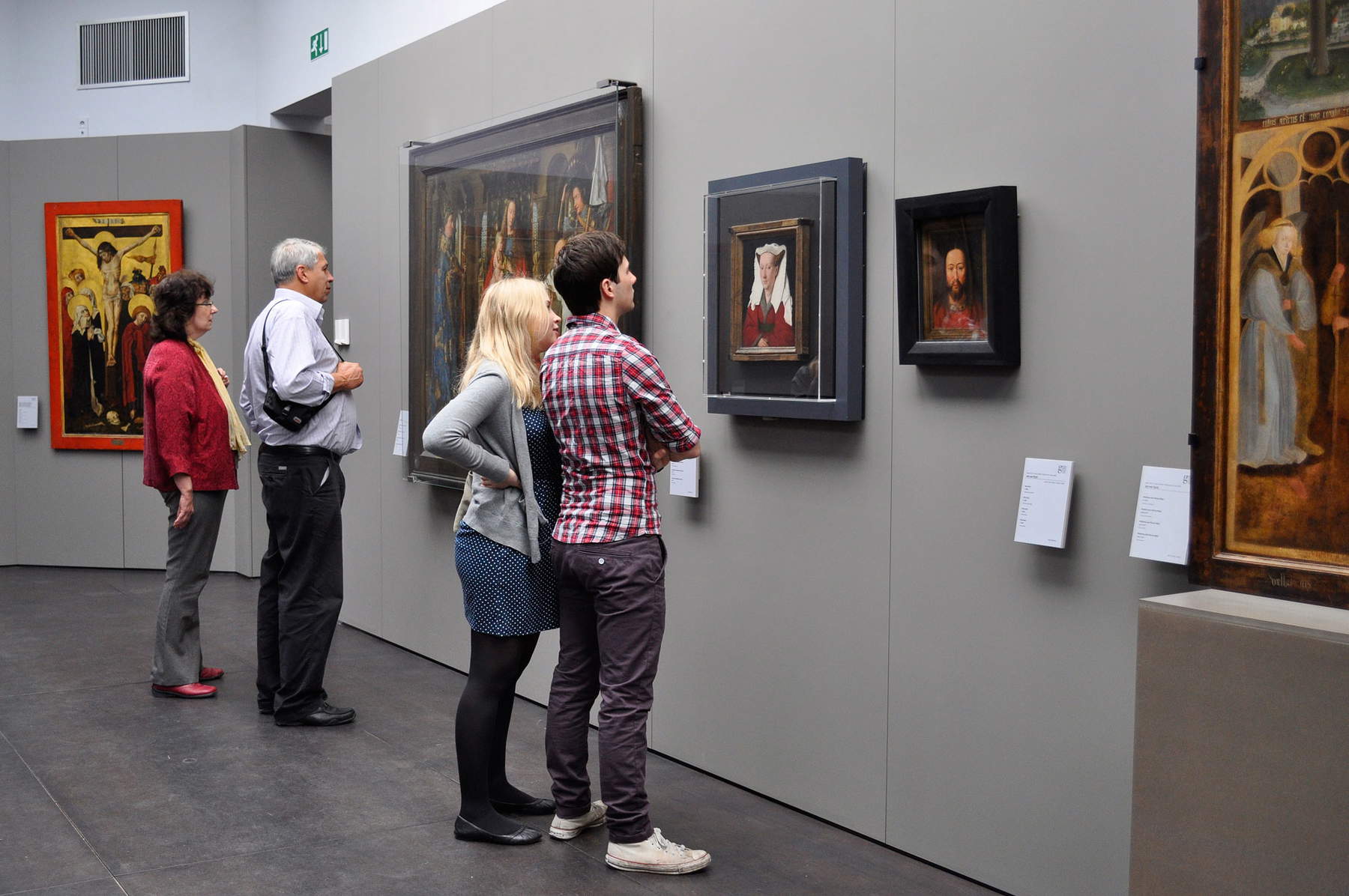 |
| Van Eyck’s works at the Groeninge Museum. Ph. Credit Sarah Bauwens |
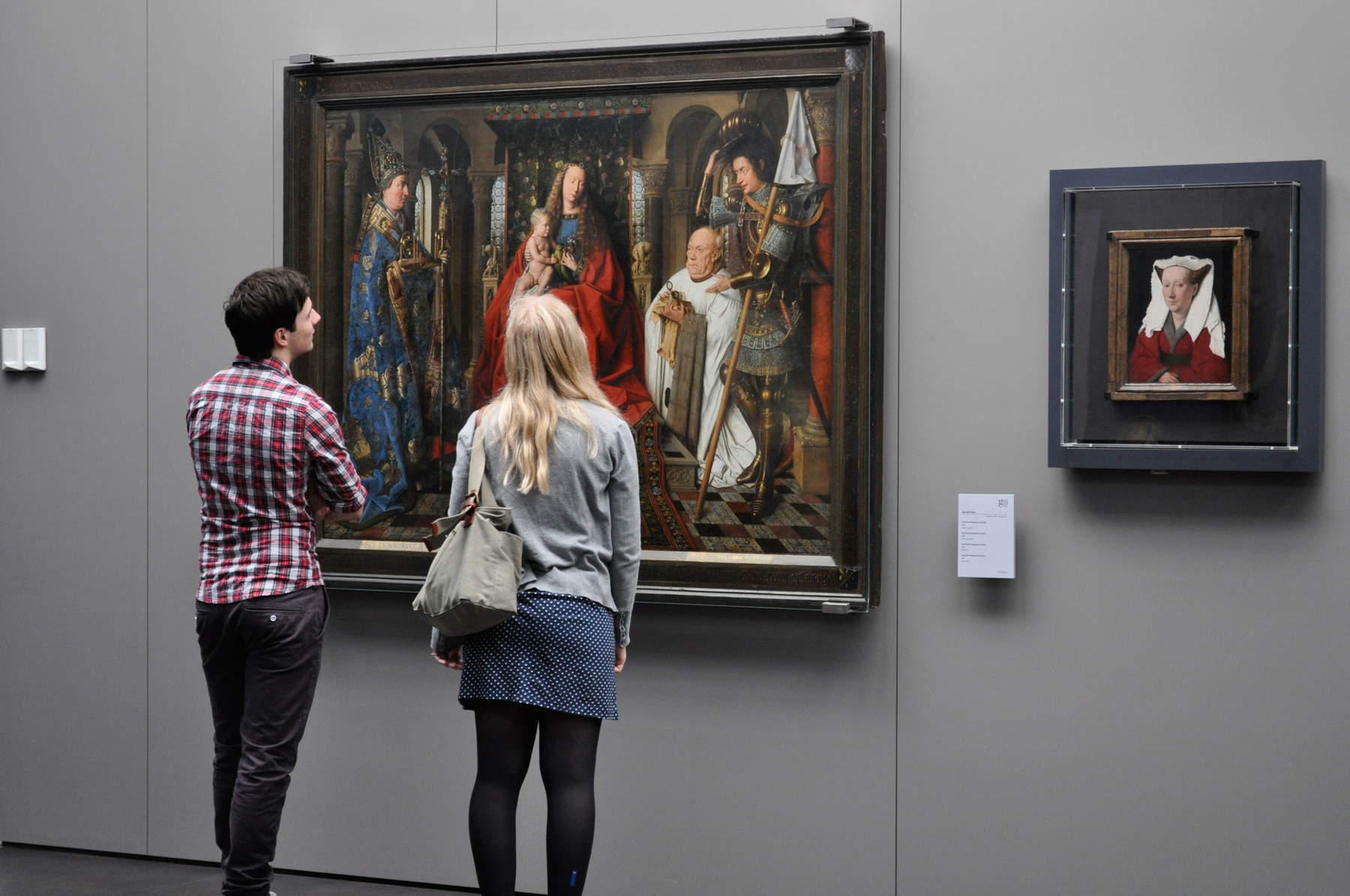 |
| Van Eyck’s works at the Groeninge Museum. Ph. Credit Sarah Bauwens |
A detailed painting, rich in detail both in the depiction of the setting in which the scene takes place and the characters represented. The textiles, the stained glass, the clothing, the accessories: everything gives the idea of luxury and wealth, from the broad cloaks, sometimes richly decorated, as in the case of the saint on the left, to the finely crafted armor of the Saint George on the right, from the Anatolian carpet descending from Our Lady’s throne to the canopy of the same, from the flooring to the statues, columns, and stained glass windows. Our Lady’s mantle even shows precious stones on its edges. In addition to the clearly evident richness, the care taken in detailing the faces is noteworthy: each character is well characterized and the physiognomic features are rendered with great realism , with all their flaws, e.g. on the face of the kneeling figure next to St. George, who is none other than the commissioner of the work, the wrinkles, dark circles and hollows, i.e., the signs of an advanced age, are well defined. One concretely feels a tactile sensation regarding the skin of each character depicted: this indicates a great deal of painterly skill on the part of the artist, capable of making what is instead painted seem real.
This is a sacred scene, specifically a Sacred Conversation, in which Canon van der Paele, dressed in white, is presented to the enthroned Madonna and Child by two saints, inside the apse of the church of St. Donazian in Bruges, i.e., the same one in which the work would have been placed and where the canon would have been buried.
In the center sits the enthroned Madonna with the Child in her arms: mother and child do not look at each other, but both are facing the patron. Mary, with long, wavy blond hair adorned with a fine accessory of flowers, holds the Child with her right hand, while with her left hand she hands him a small bouquet of red and white flowers; the Child is playing with a budgerigar, probably a symbol of the Annunciation, as its verse refers to the word “Ave.” The two small statues placed on either side of the Madonna represent Cain and Abel and Daniel and the lion.
As already stated, on the right is depicted Canon van der Paele dressed in a white robe and holding a book and a pair of spectacles in his hands: the patron is keen to present himself as a scholar. He was a fish merchant who had nevertheless obtained a relevant position in ecclesiastical circles. Standing next to him is Saint George, who bears the name of the canon himself, so he is his patron saint. He is wearing shining and highly decorated armor; particular to note is the reflection on his elbow of Our Lady’s red cloak. With his right hand he is removing the helmet from his thick, black hair as a sign of respect, while with his left he gestures to present the kneeling canon to Mary and holds the long flagpole with his arm. The other saint attending the Sacred Conversation is, on the left, Saint Donatian (the saint to whom the church is dedicated): in profile, he shows his broad, blue cloak adorned with gilded figures; on his head he wears a luxurious mitre embellished with precious gems, and with his hands he holds a crosier that ends at the top with a cross and a candlestick with lighted candles.
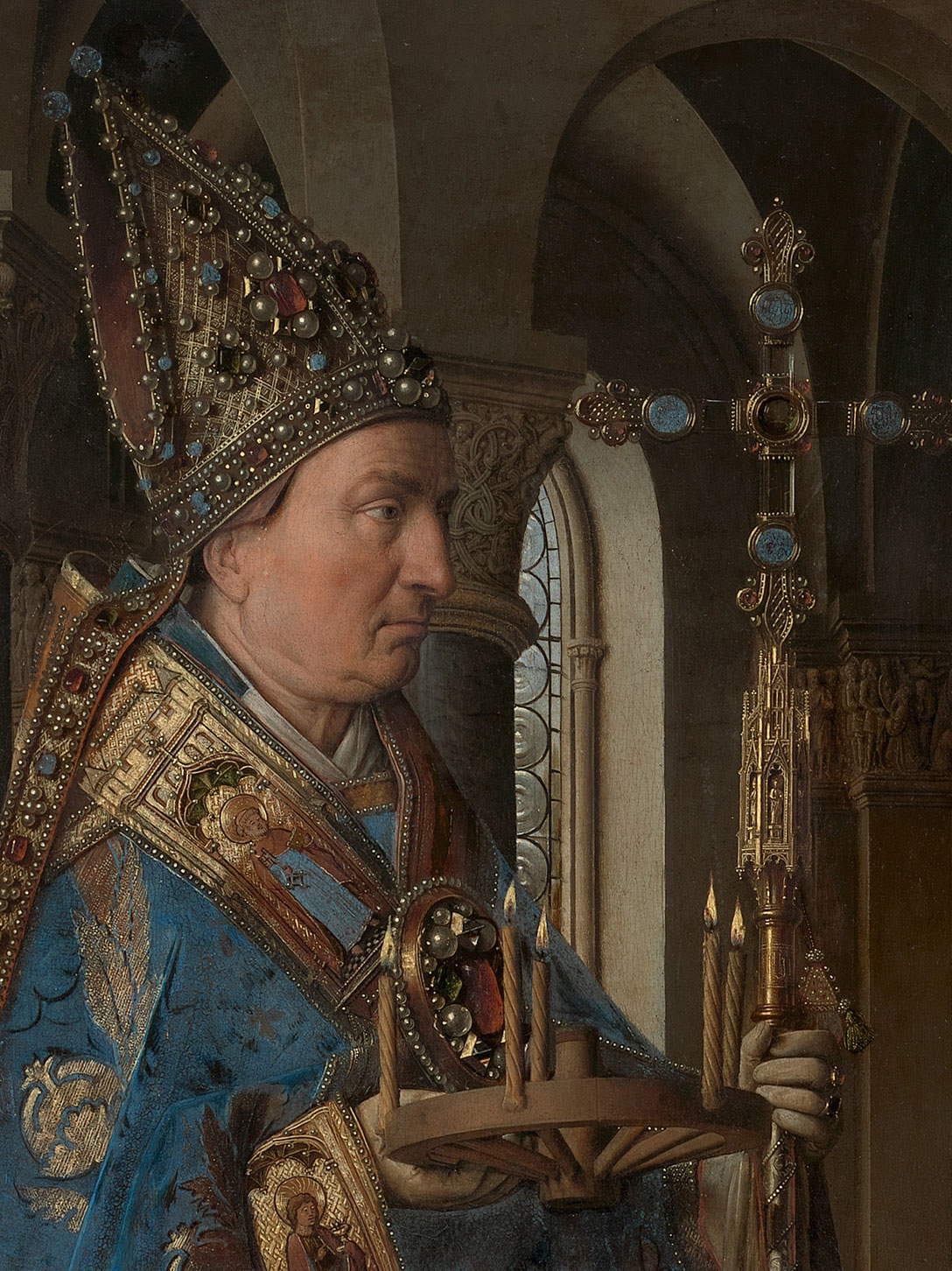 |
| Jan van Eyck, Madonna of Canon Van der Paele, detail |
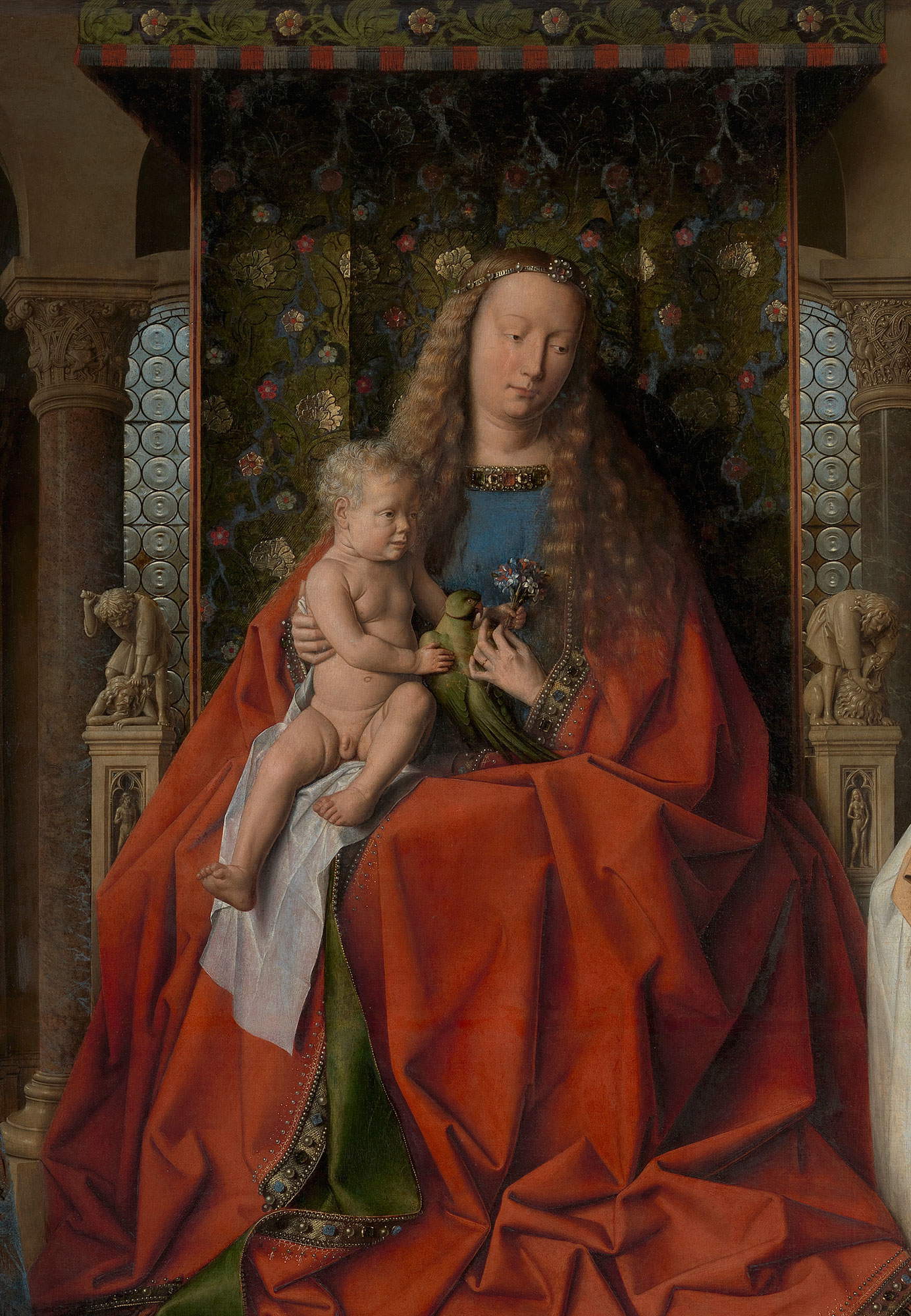 |
| Jan van Eyck, Madonna of Canon Van der Paele, detail |
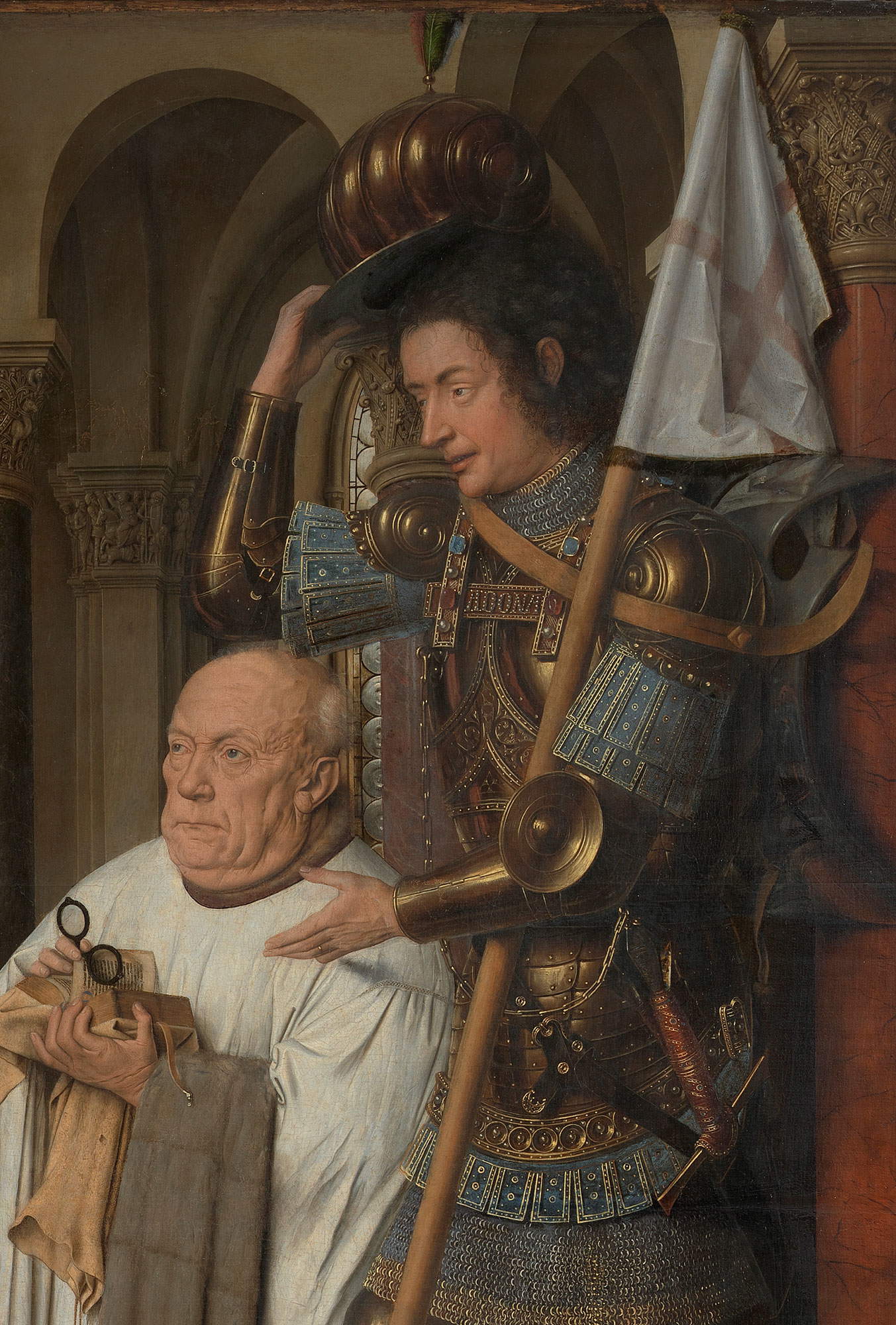 |
| Jan van Eyck, Madonna of Canon Van der Paele, detail |
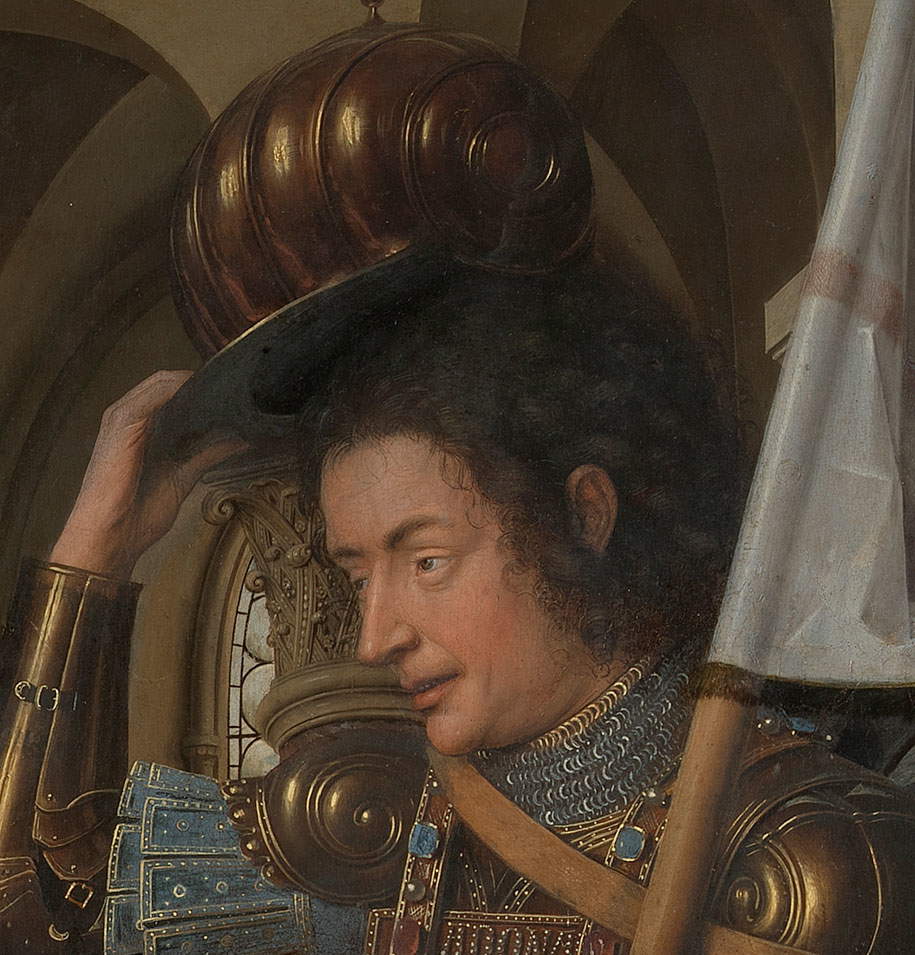 |
| Jan van Eyck, Madonna of Canon Van der Paele, detail |
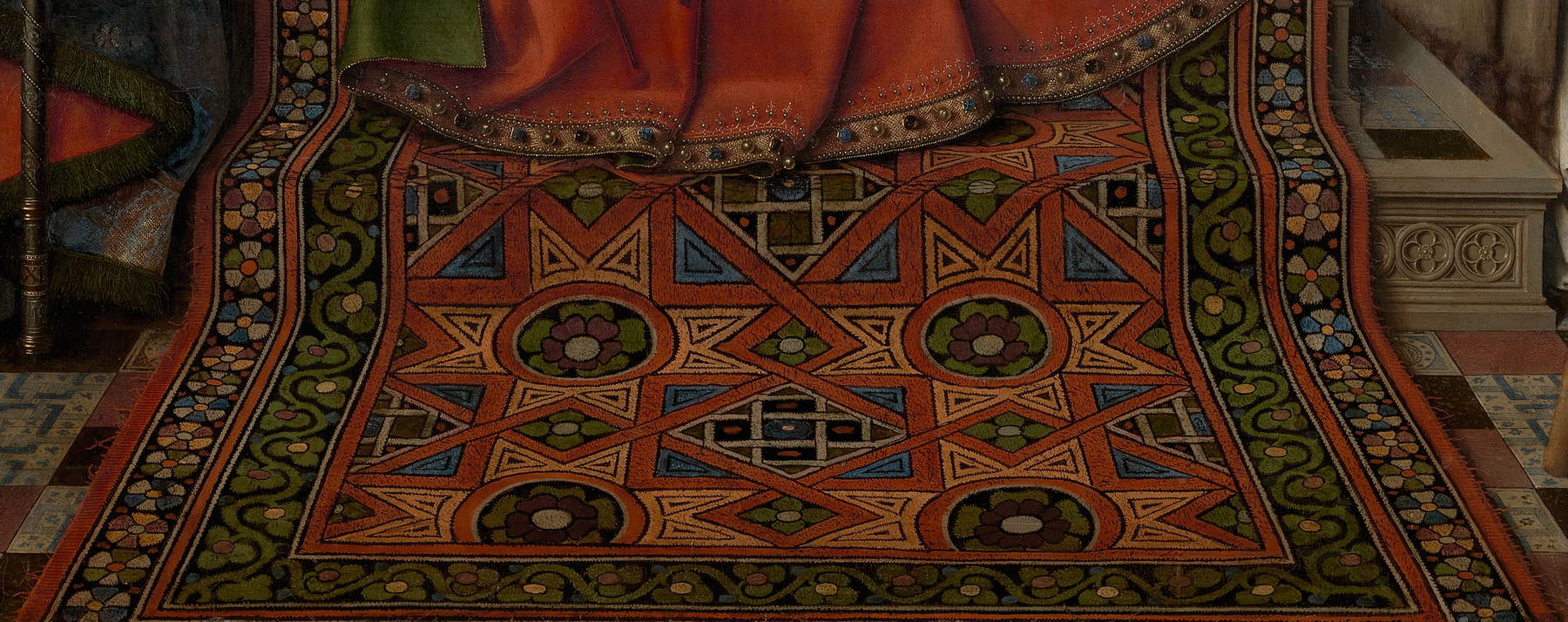 |
| Jan van Eyck, Madonna of Canon Van der Paele, detail |
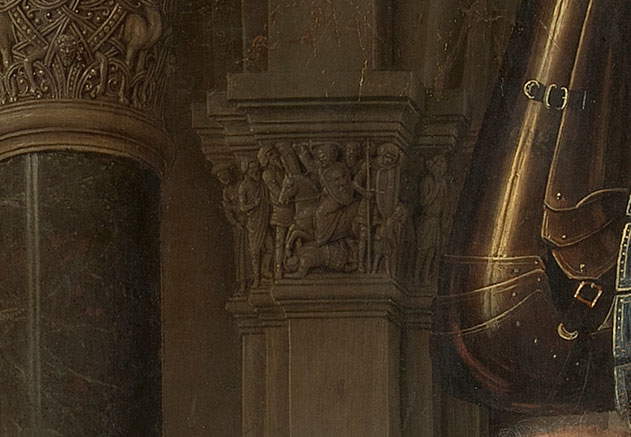 |
| Jan van Eyck, Madonna of Canon Van der Paele, detail |
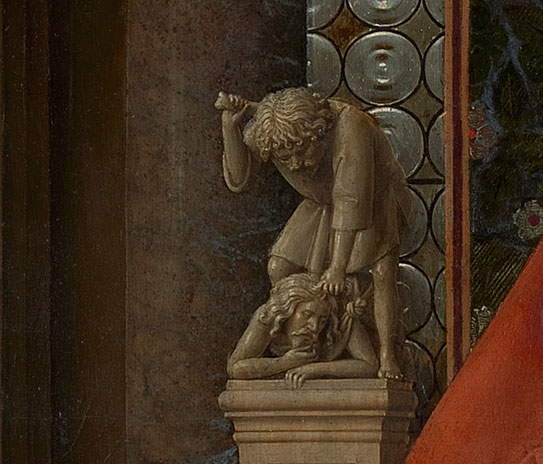 |
| Jan van Eyck, Madonna of Canon Van der Paele, detail |
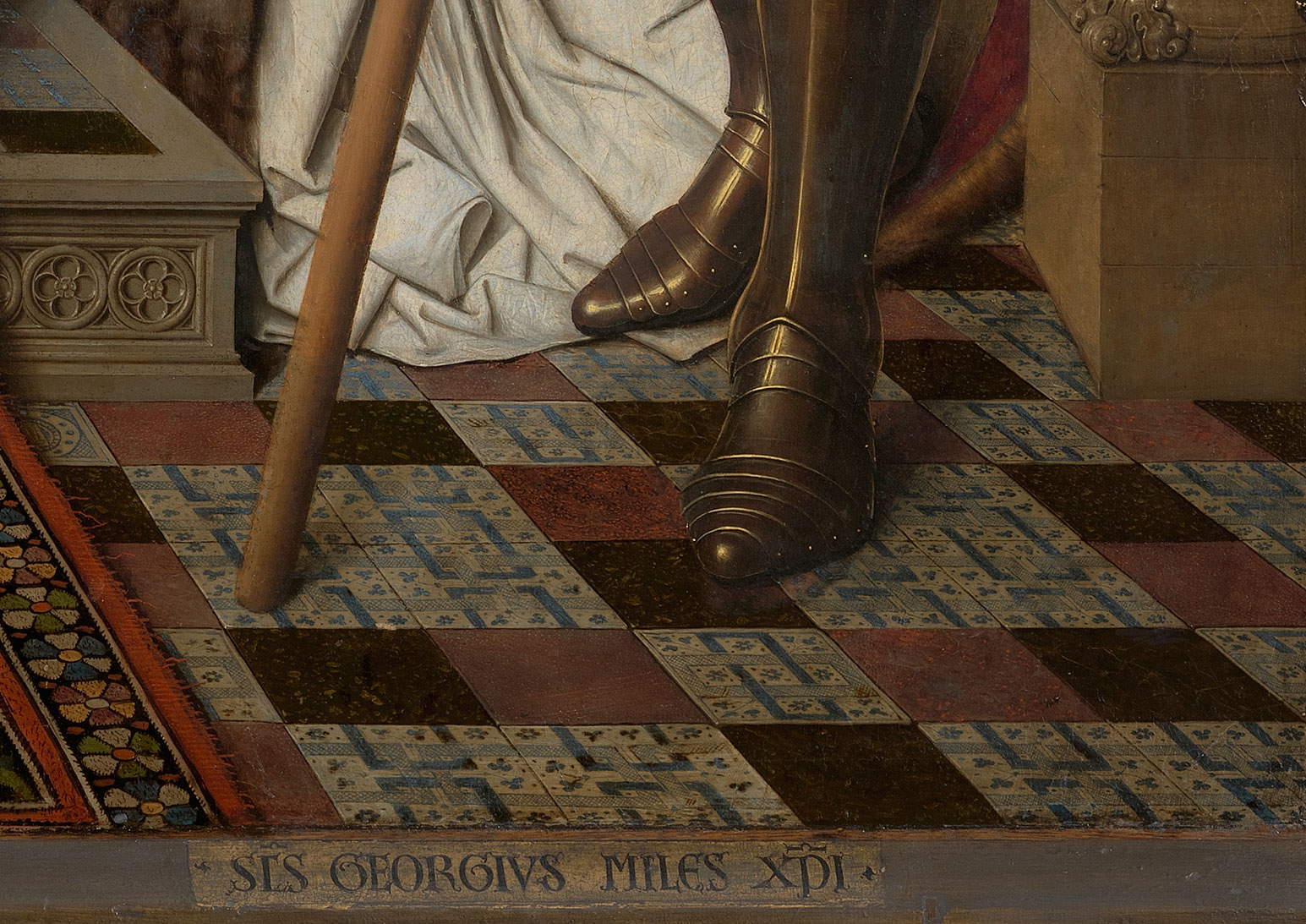 |
| Jan van Eyck, Madonna of Canon Van der Paele, detail |
The brilliance of the colors stands out to the viewer’s eye: red, blue, and gold; a characteristic trait of van Eyck due to his use of oil paints that allowed the painter to fully render the brilliance and vividness of the tones.
New research has revealed that the Flemish canon spent many years at the papal court in Rome, but he never lost sight of his personal and financial interests, so much so that he was able to afford a great work of mind-blowing quality created by the court painter of the Dukes of Burgundy.
Van Eyck’s other masterpiece in Bruges is the Portrait of Margaretha van Eyck, his wife, completed in 1439. Now housed in the Groeninge Museum, presumably the painting was intended to hang on the walls of the van Eyck house, but some doubt has arisen about a strictly personal use considering the fact that theLatin inscription on the frame documents that the work was completed by her husband Johannes on June 17, 1439: a public function of the work is therefore assumed. Moreover, this is probably the first painting in European art history in which an artist depicts his wife. Again, van Eyck uses oil paints: indeed, brilliant are the red of the woman’s dress and the white of the fabric covering her head, which stand out against the dark background of the painting. The dress is trimmed with gray fur and cinched at the waist by a green belt. Margaretha is placed three-quarters to the viewer and it appears that her head is disproportionate to her torso; she stares fixedly at those watching her and holds, on her dress, one hand above the other.
Both of the above-mentioned masterpieces are featured in the exhibition Bruges has dedicated to the painter until July 12, 2020 at the Groeninge Museum.
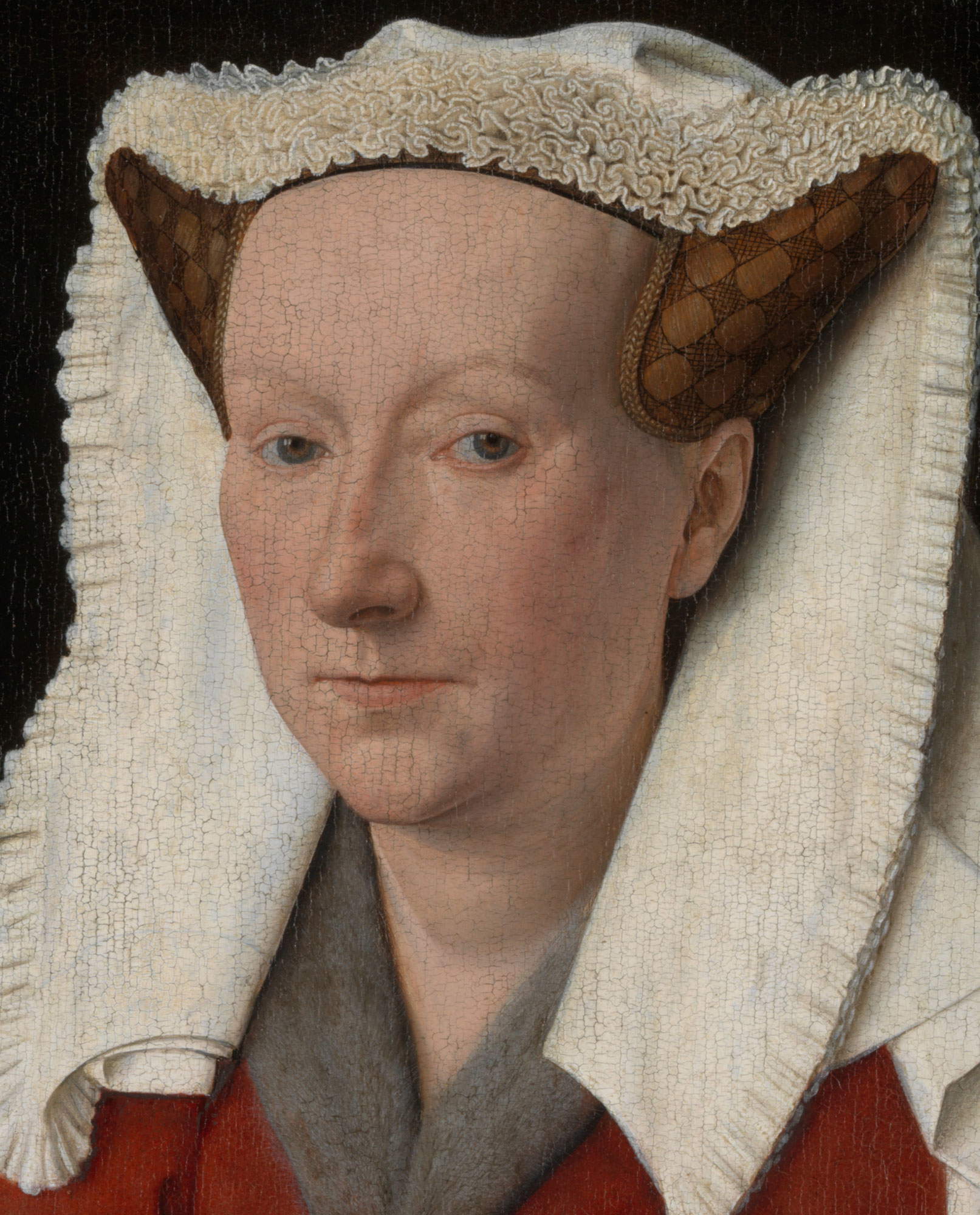 |
| Jan van Eyck, Portrait of Margaretha, detail |
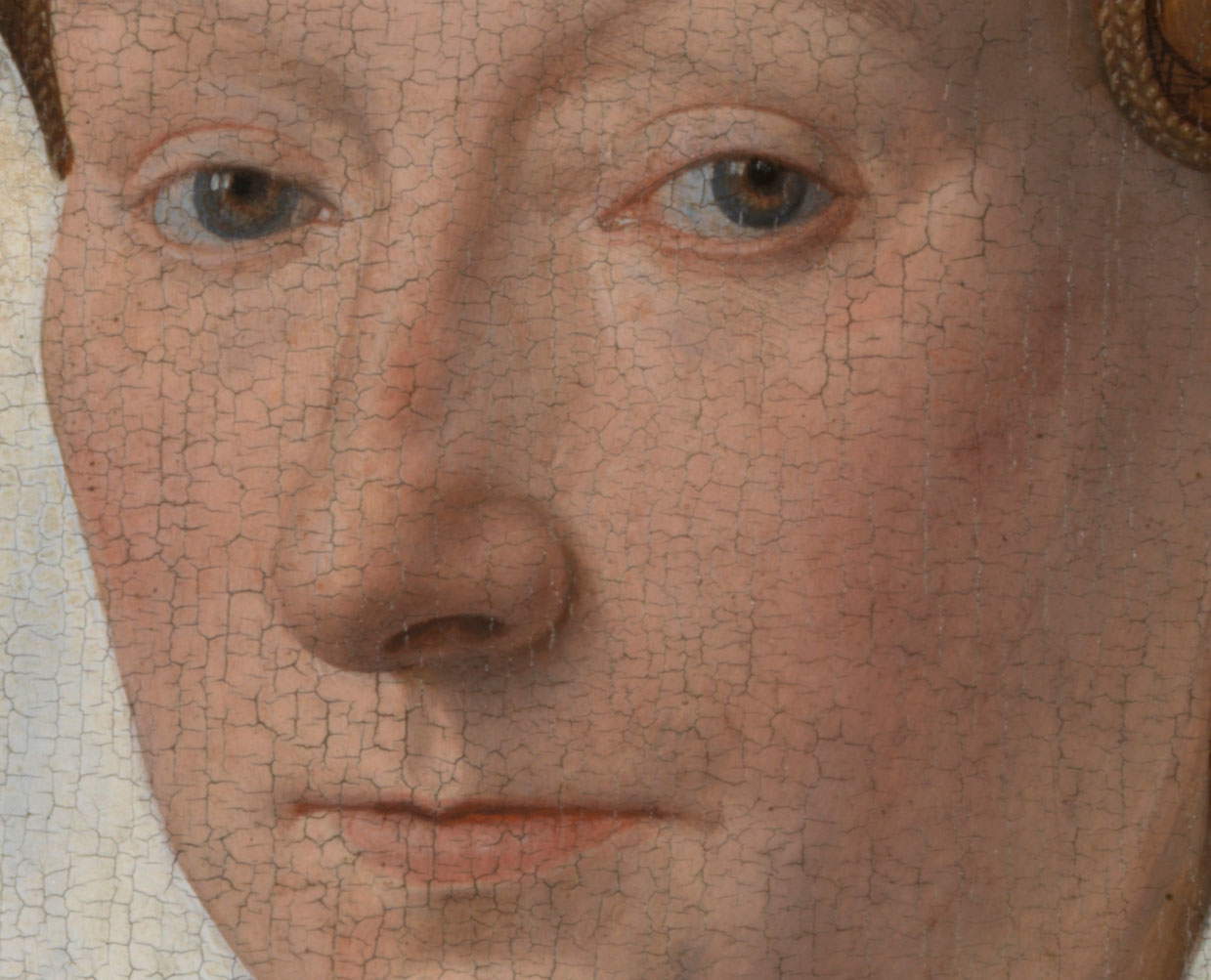 |
| Jan van Eyck, Portrait of Margaretha, detail |
However, these do not constitute the only evidence of van Eyck in Bruges, but by visiting the city it is possible to take a real walk in the artist’s footsteps, from his home to the cathedral where he is buried. It will feel like going back in time, as Bruges has largely retained its medieval layout. First of all, one could start from the Gouden Handstraat, where, next to the Torenbrug bridge, is his home and studio, at number 6: here he lived with his wife Margaretha and their children, produced his works, including the two mentioned above, and still here it is likely that he invited many important personalities of that era. A little further on was the painters’ quarter, in which some of the Flemish Primitives lived. Hans Memling (Seligenstadt, c. 1436 - Bruges, 1494), however, lived in the Sint-Jorisstraat: the latter, an artist from Bruges, was much influenced by van Eyck’s art, producing, in the course of his production, exclusive panels for certain of his wealthy fellow citizens, for Spanish and Italian merchants and bankers. His famous works housed in Bruges are the Reliquary of St. Ursula and the Triptych of St. John, both preserved in the city’s Memling Museum.
Returning to van Eyck, a statue of him stands out in the Jan van Eyckplein square. The current one was placed in 1878 in the presence of King Leopold II and was made by local sculptor Hendrik Pickery (Bruges, 1828 - 1894). In his hands, the statue holds a distillation cruet, which the painter used to perfect oil painting. Opposite the statue stands the tower of the Poortersloge, a building constructed in the late 14th and early 15th centuries right in the commercial hub of Bruges. In fact, in this area of the city, luxury goods, such as gold brocades, rock crystal, precious stones, spectacles, skins, lenses, and mirrors, which are seen reproduced in van Eyck’s paintings, were once traded in this area of the city during the painter’s time. Today, the Poortersloge houses an art collection from the city, a legacy of the period between 1720 and 1890, when the building was converted into the Academy of Fine Arts.
Commissioners of van Eyck’s paintings were often Spanish and German: some of the city’s street or square names refer precisely to the presence of foreigners of different nationalities, such as the Spanjaardstraat, which refers to the presence of the Spanish Lodges, while the Oosterlingenplein square refers to the Hanseatic League, which brought together German merchants abroad to protect their common interests. The famous local patron, Canon van der Paele, lived near the Philipstockstraat, along which the canons’ houses were located.
Another statue depicting van Eyck, made by Jan-Robert Calloigne, was placed on the Burg for a long time: originally displayed in the Academy, it was moved in 1857 to the square where Pickery’s statue currently stands; when it was replaced by the second one in 1878, it came to the Burg square and, after a century, was permanently placed inside theAcademy of Fine Arts. Also, below Burg Square, you can see the remains of the Sint-Donaaskathedraal, the cathedral of which van der Paele was provost. It is here that van Eyck’s children were baptized and the painter himself was buried. Staying in this area, several polychrome statues designed by the artist and two of his paintings are preserved in the town hall. In addition to today’s Jan van Eyckplein square, trade took place in the market square, where the textile market (Lakenhalle) once took place: one could find thescarlet fabric often reproduced on van Eyck’s canvases. It was in this square, by the Hallen Palace and the Government Palace, that the first major exhibition devoted to the Flemish Primitives was held, and even today, in the Historium Museum it is possible to delve into the Golden Age of Bruges, the era in which the painter lived.
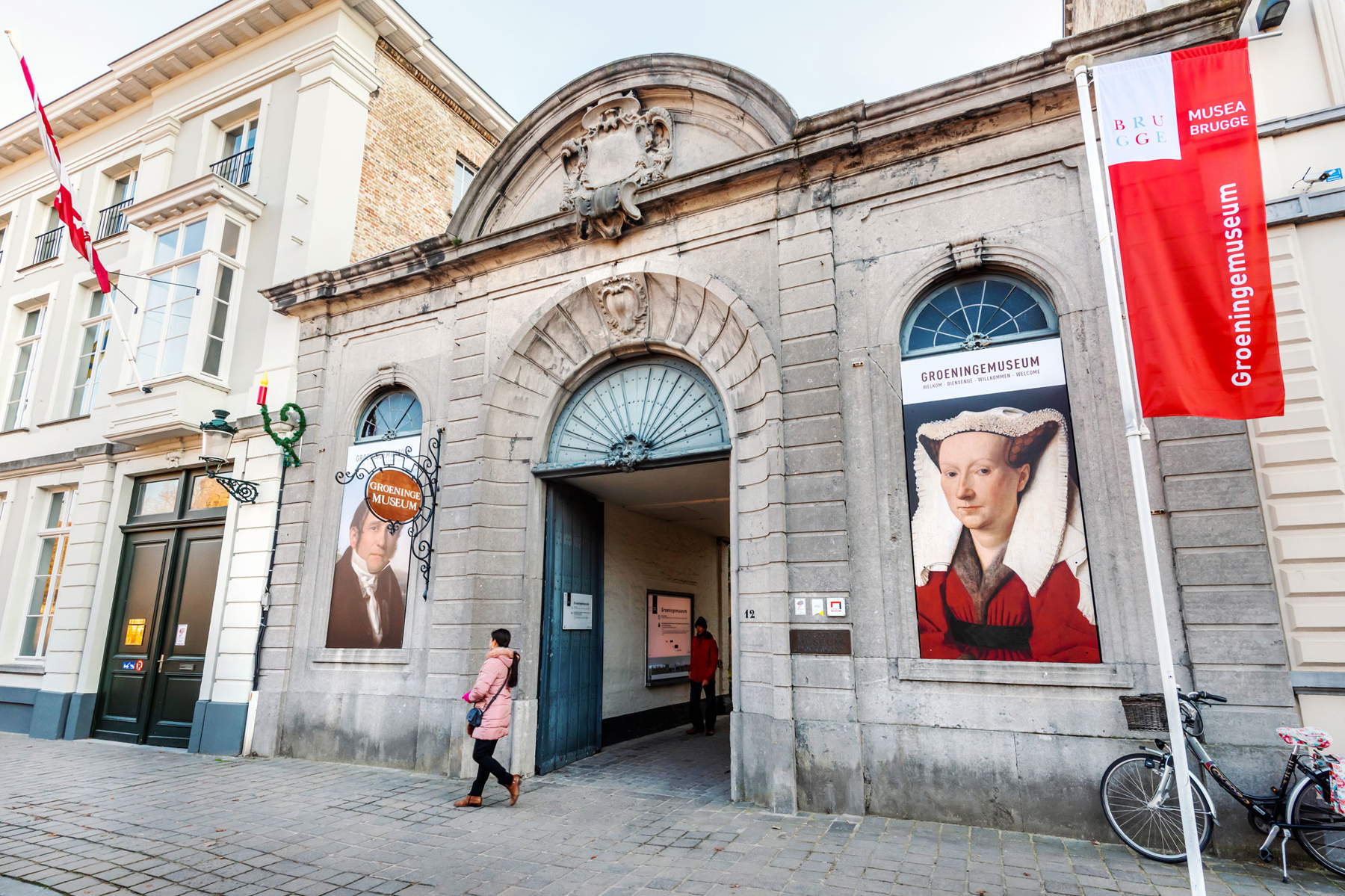 |
| The Groeninge Museum. Ph. Credit Inge Kinnet |
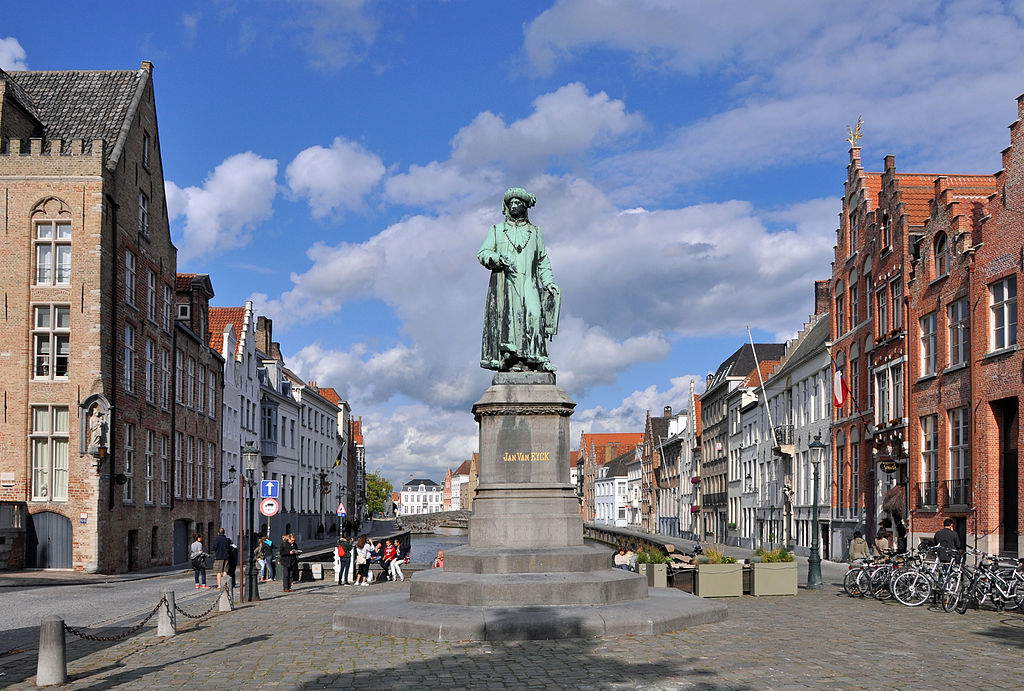 |
| Bruges, Jan van Eyckplein. Ph. Credit Marc Ryckaert |
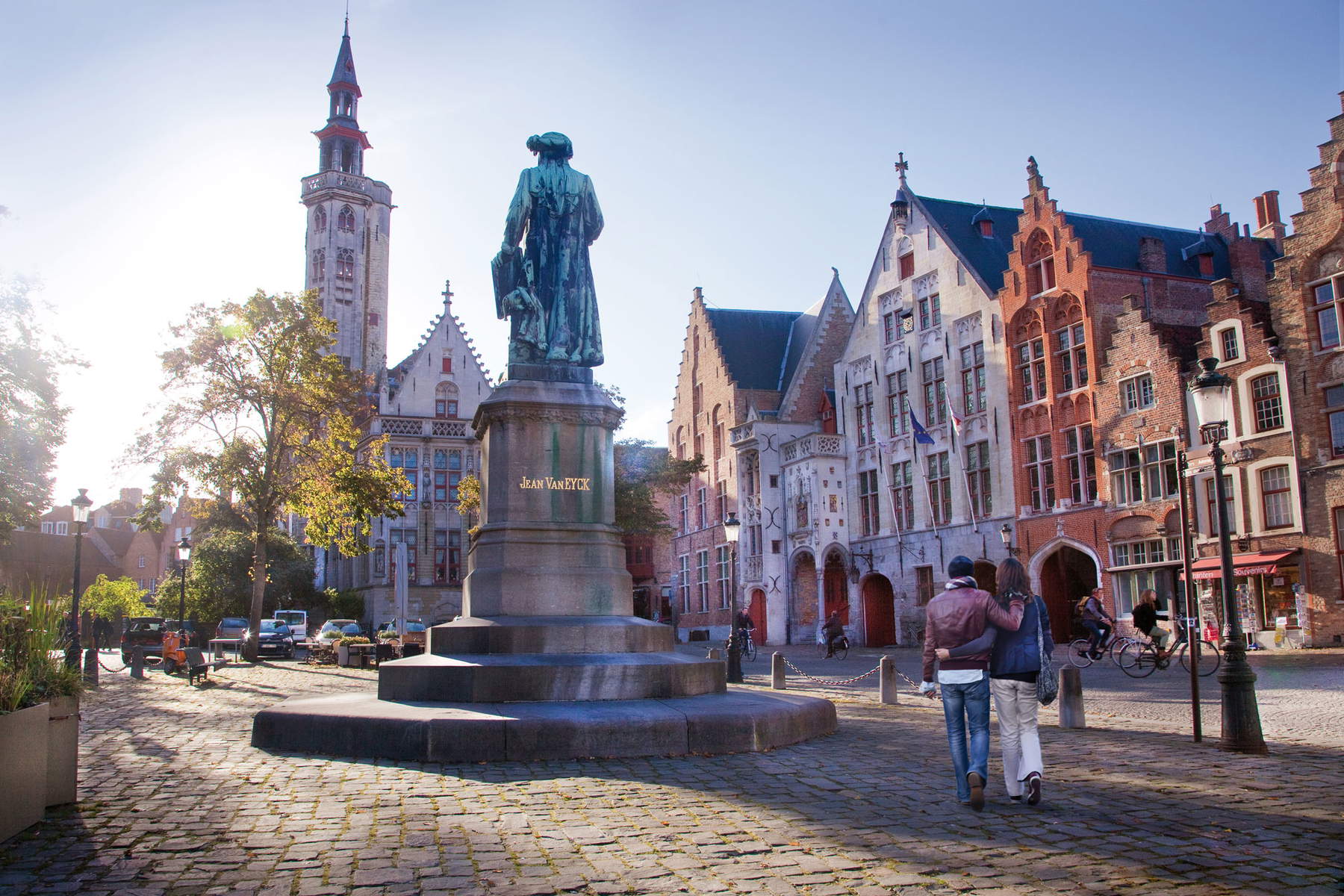 |
| Bruges, Jan van Eyckplein |
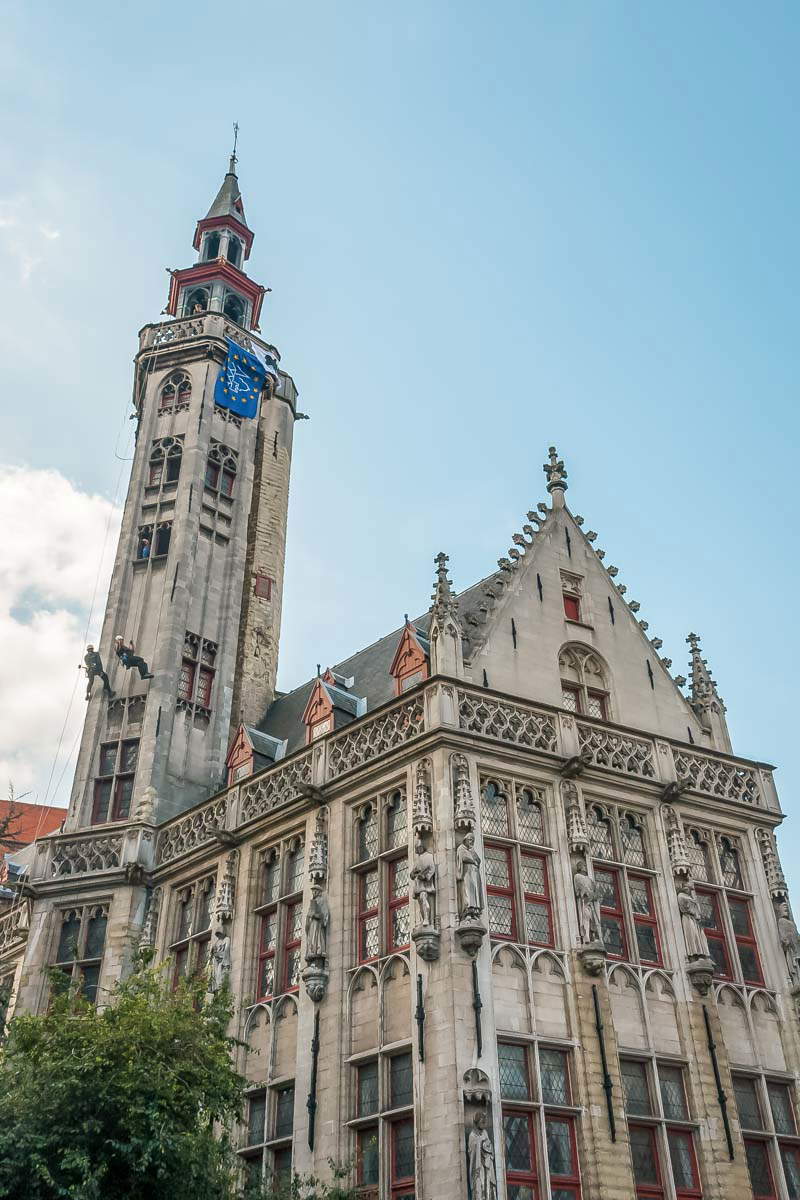 |
| Bruges, the Poortersloge |
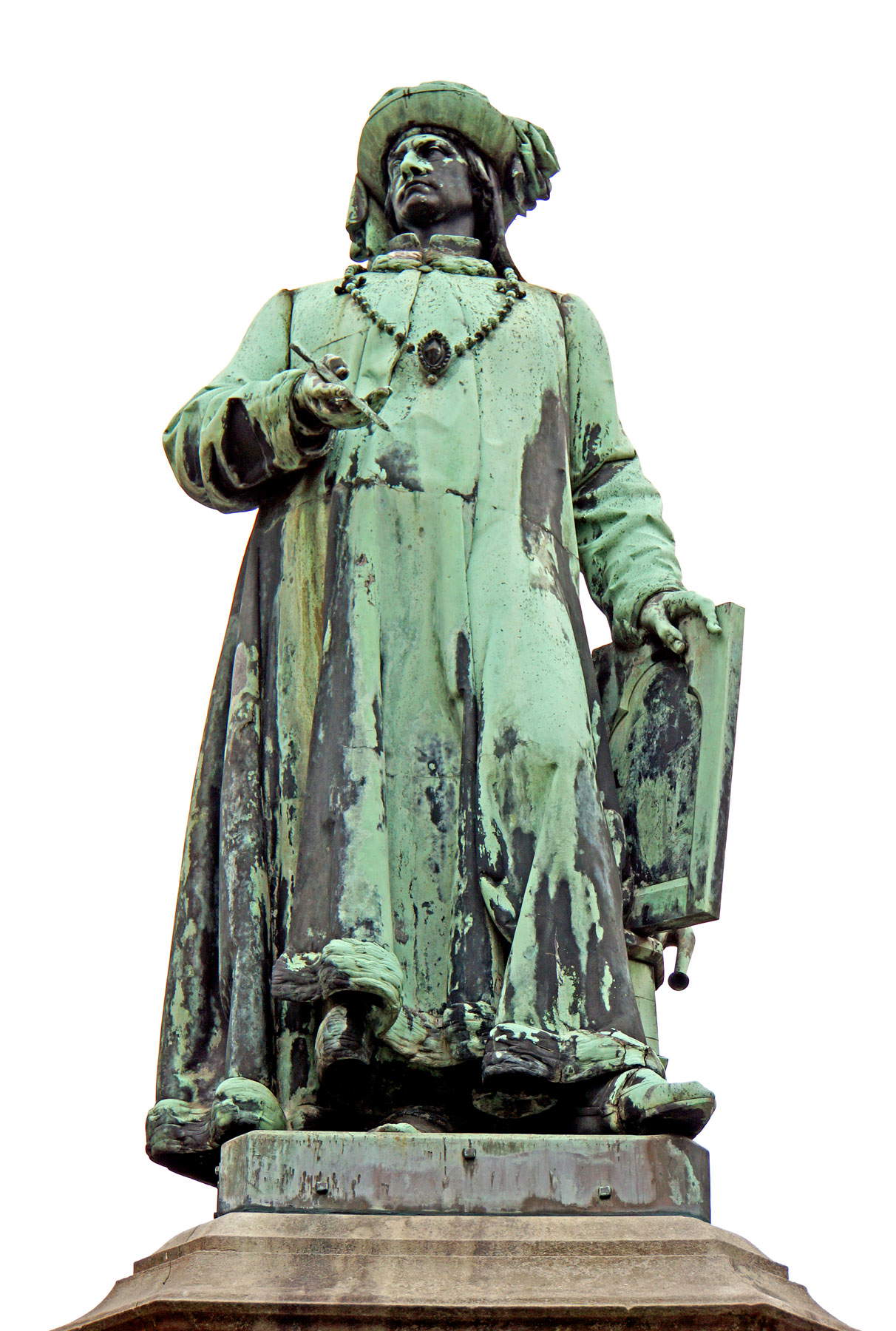 |
| Hendrik Pickery’s statue of Jan van Eyck. |
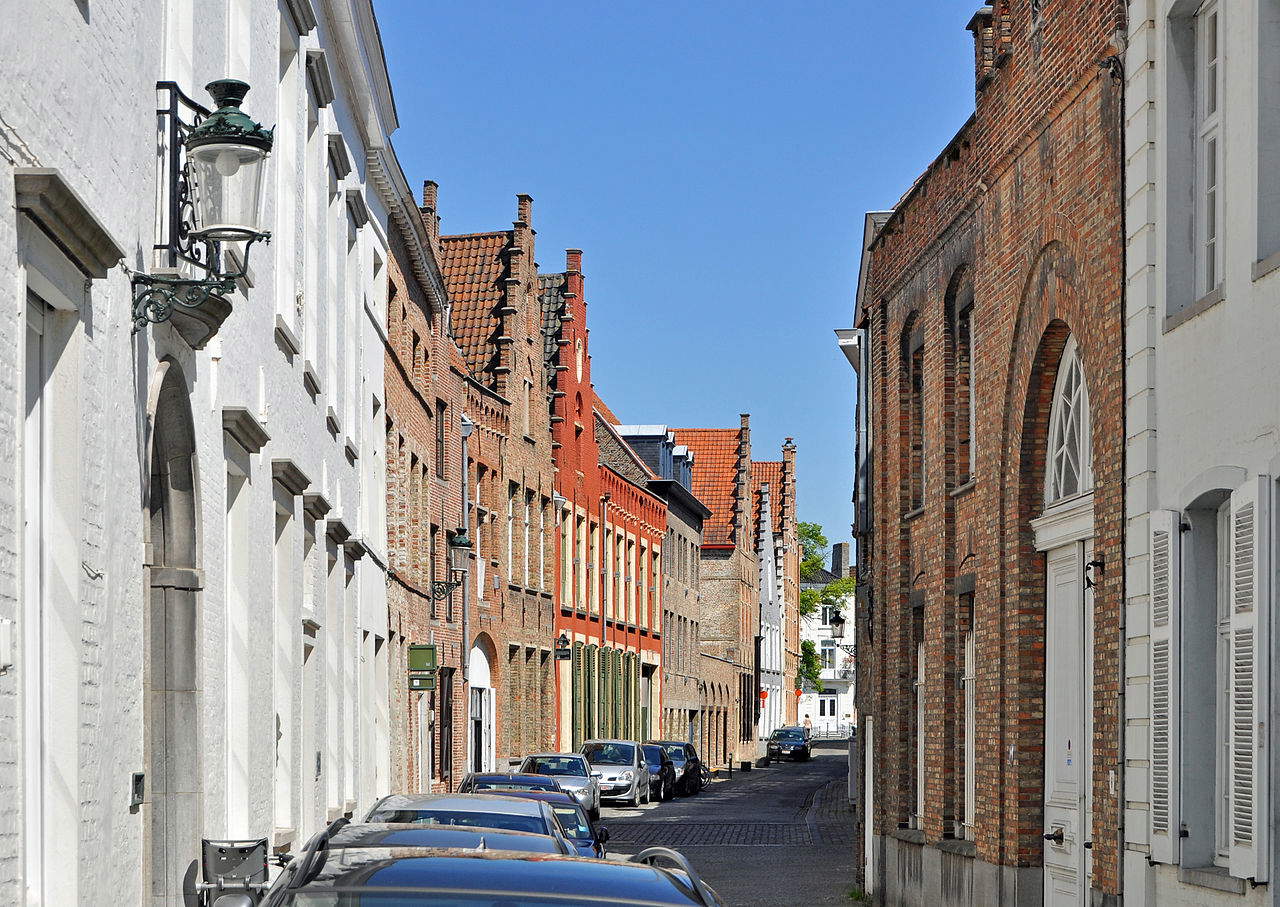 |
| The Gouden Handstraat. Number 6 (the first brick building on the right) is what was once van Eyck’s house. Ph. Credit Mark Ryckaert |
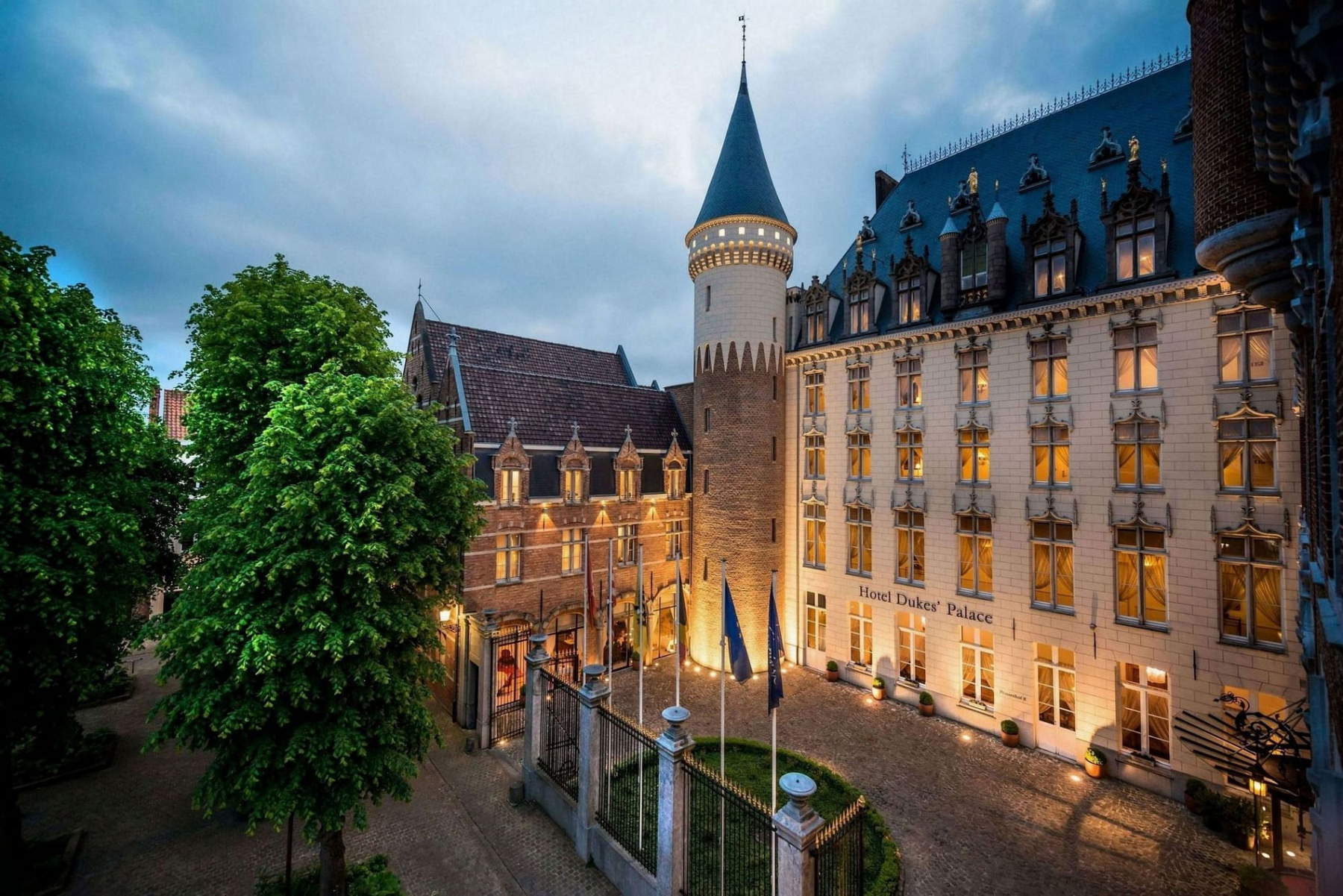 |
| The Prinsenhof, now the Dukes’ Palace hotel. |
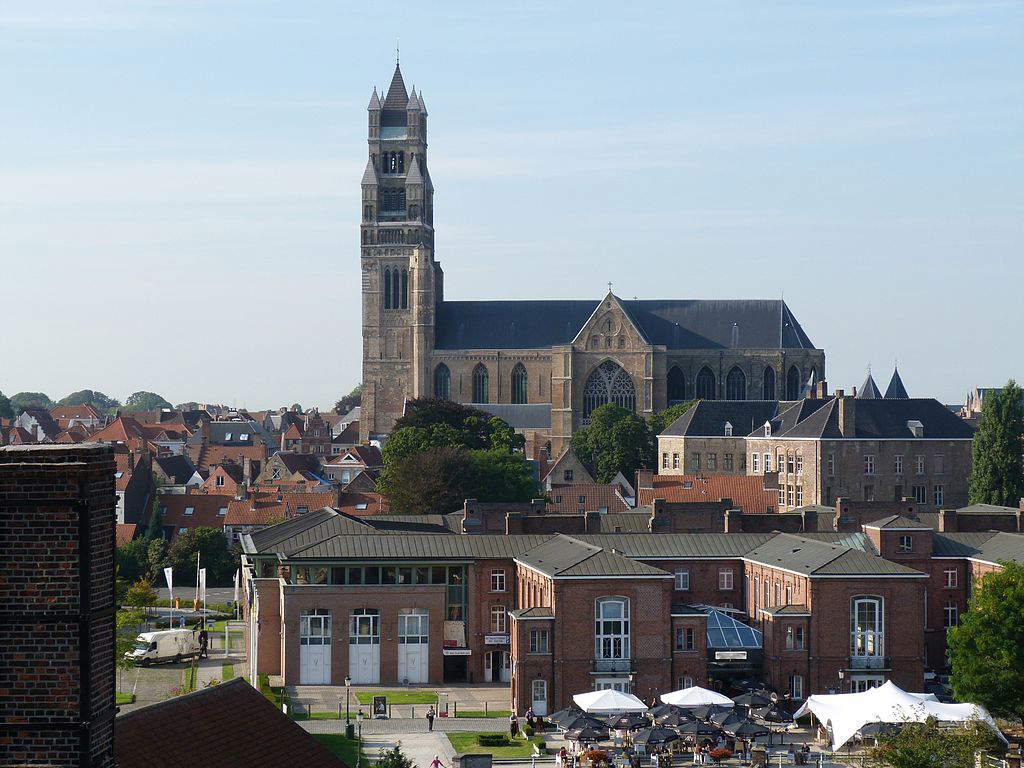 |
| St. Savior’s Cathedral. Ph. Credit Michiel Dumon |
If you enter the luxurious five-star Dukes’ Palace hotel, you instead enter what was once the residence of the dukes of Burgundy, the Prinsenhof. A map of the world drawn by the artist probably hung in the palace, and he himself decorated its walls. But the journey in van Eyck’s footsteps does not end here.
In the Nonnengat district was the Chapel of St. Luke and St. Eloi, or the chapel of the guild of painters and sculptors. A portrait of Margaretha van Eyck and Jan van Eyck’s self-portrait were exhibited inside, which has belonged to the National Gallery in London since 1851. Totally reconstructed, the chapel is now part of the Sint-Jozefsinstituut.
Finally, St. Saviour’s Cathedral preserves the choir st alls he designed, perhaps for theOrder of the Golden Fleece. He probably designed the vestments and goldsmithing for the latter.
From his home to the majestic St. Saviour’s Cathedral there are many places, as we have seen, that recall the years van Eyck spent in Bruges. Years in which the painter produced splendid masterpieces for which he fully deserved the relevant role of painter of the Burgundian court.
Warning: the translation into English of the original Italian article was created using automatic tools. We undertake to review all articles, but we do not guarantee the total absence of inaccuracies in the translation due to the program. You can find the original by clicking on the ITA button. If you find any mistake,please contact us.




























